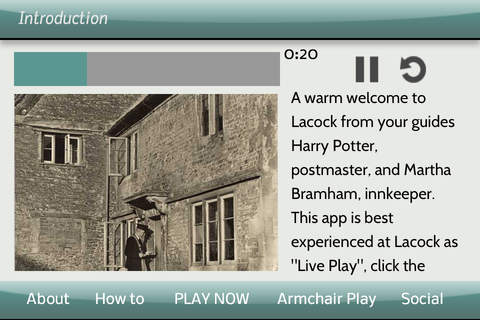
Lacock Unlocked
Développeur Wiltshire College of Further and Higher Education
Explore the historic village of Lacock. As you walk around the village you will hear stories linked to items from the estate archive.
Join twentieth century village post master, the real Harry Potter, and eighteenth century innkeeper, Martha Bramham in this walk though time. Cared for today by the National Trust, the Lacock estate has been in the ownership of the same family for over 400 years.
This locative media app produced by Creative Wiltshire is part of Wiltshire and Swindon History Centre’s Lacock Unlocked project. The archive was saved for the nation by a Heritage Lottery Fund grant and the app offers an innovative form of interpretation for it. Items include the illustrated 16th century Royal pardon for the first owner of the Abbey at the heart of the village through to more recent accounts of the treatment of the village poor and propaganda photographs taken during the Second World War. These all form the basis for stories you will hear as you walk the village.
Lacock was the scene of key developments in photography. Although William Fox Talbot made the first photographic negative in the Abbey he relied on the craftsmen of the village, a bill in the archive links to an item in the village history walk. The app will be of interest to visitors and local people, it tells the story of a group of impoverished villagers sent to Canada in the 1840’s and invites their descendants to tell their stories .
The app offers links into the ongoing project to develop the archive through social media and with the local community.
Harry Potter fans will enjoy the irony of being shown around the village used as a location in the Potter films by the real Harry Potter, postmaster to the village for much of the twentieth century. Lacock has been used as a location in many films and tv dramas, using this app you will discover some of the real dramas from this Wiltshire village.
The app is backed up through the Wiltshire and Swindon History Centre and is available in an ‘armchair’ version for those who are unable to visit or walk round the village.


